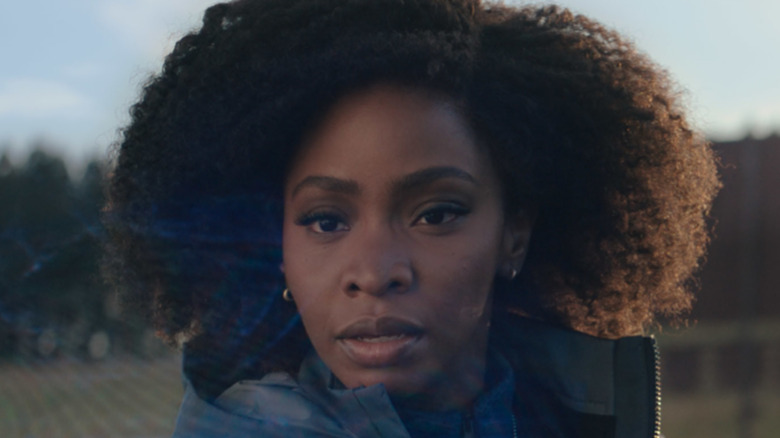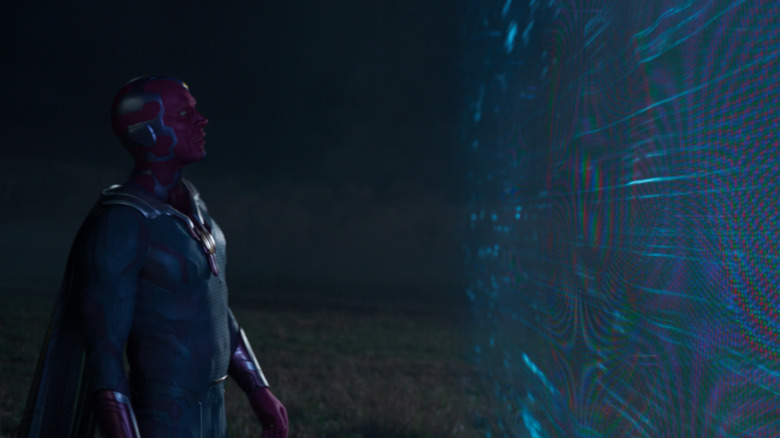What You Never Noticed About WandaVision's Hex Walls
While there might have been a contingent of fans who were worried about Marvel's foray into television with its new TV shows on Disney+, very little has been lost in the transition to the small screen. The storytelling is sharp, the visual effects still look incredible, and the action sequences are on par with the feature films. WandaVision, the first official MCU show to debut on the streaming service, took a deep dive into trauma and grief as it depicted Wanda (Elizabeth Olsen) and a newly created Vision (Paul Bettany) living an idyllic life in the suburbs. It was well regarded by critics and fans alike, and it looked incredible.
Most of what occurred in the nine-episode series took place inside the Hex, which was essentially a giant energy barrier that encompasses the town of Westview, N.J., and some of the area surrounding it. The size and scope of the Hex was controlled by Wanda, though she wasn't always aware of what she was doing.
A visual effects company called Digital Domain worked on episodes 4, 8, and 9 of WandaVision. That company's VFX supervisor, Marion Spates, recently spoke to Art of VFX about the creation of the Hex and its inspiration. You might be surprised by what went into putting together the look and feel of it.
The Hex wall was based on old school tube-based TV sets
WandaVision drew heavily from classic sitcoms to tell its story, so it made sense that the visual effects in the show also drew from TV history. According to Spates, the look of the Hex came from WandaVision's VFX Supervisor, Tara DeMarco, who wanted it to be an homage to old tube-based television sets.
"The wall is meant to reflect the look of a cathode-ray tube television, complete with glitchy lines caused by interference, and a different color scheme used to reflect Wanda's emotional state," Spates said. "The creation of the hex wall was driven by the story, and there are several details in it that are a direct reflection of the show's TV and sitcom-inspired nature. The wall is also influenced by Wanda's emotional state, so in episode 104 when you first see the wall from the outside it is a calm blue, but in the final moments when Wanda is angry, it is a dark red."
Spates then went on to explain, in detail, some of the elements of the wall that were typical of cathode-ray tube TVs, which would have been the type of TVs present in the early episodes of the show, which pulled from the '50s and '60s.
"The first was an effect called 'phosphor pattern,' which is inspired by what you'd see if you placed a powerful magnet next to a CRT screen – the image would distort," he said. "The second effect was 'cathodic lines,' which mimicked the lines you'd occasionally see across a CRT TV. The third was the 'cathodic panels,' which are smaller cubes that add detail to the image. All three made up the hex wall."
If you're interested in seeing the Hex wall in action, WandaVision is streaming on Disney+ right now.

